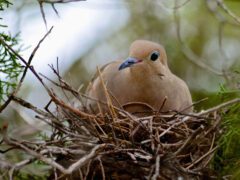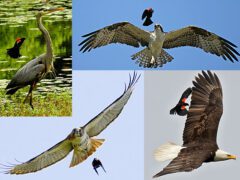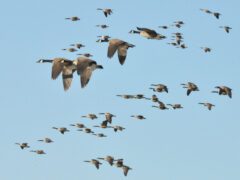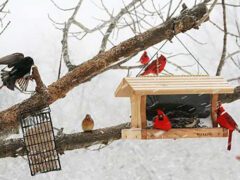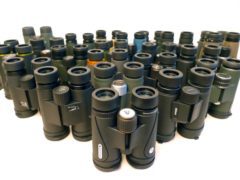Western Screech-Owl Similar Species Comparison
Main SpeciesWestern Screech-Owl
Adult
Small stocky owl with a squarish head and little ear tufts. Plumage color varies from gray to brown, but generally has dark streaks on the belly, a dark border around the face, and a dark bill.
© Tim Avery / Macaulay LibraryUtah, August 01, 2020Adult
Small stocky owl with a squarish head and little ear tufts. Individuals in the southwestern U.S. tend to be paler gray.
© David De Rivera Tønnessen / Macaulay LibraryColorado, December 05, 2018Adult
Active at night. Note small ear tufts and yellow eyes.
© Tom Johnson / Macaulay LibraryCalifornia, January 01, 2014Adult
Small owl with small ear tufts. Birds in British Columbia have more red-toned plumage.
© Logan Lalonde / Macaulay LibraryBritish Columbia, February 28, 2015Adult
Small stocky owl with a squarish head and little ear tufts. Plumage color varies from gray to brown, but generally has dark streaks on the belly, a dark border around the face, and a dark bill.
© Matthew Grube / Macaulay LibraryCalifornia, February 25, 2017Adult
Call is a series of high, accelerating whistles, like the sound of a dropped ping-pong ball coming to rest. Usually males give the call, but sometimes females join in for a duet.
© Gregory Griffith / Macaulay LibraryTexas, May 01, 1993Juvenile
Nests in holes in trees. Juveniles are covered in fluffy white down.
© Janine Schutt / Macaulay LibraryWashington, June 30, 2019Adult
Found in forests, particularly among deciduous trees. They spend daylight hours in a roost hole sometimes looking out from the entrance.
© Laura Keene / Macaulay LibraryArizona, April 03, 2016Adult
Roosts and nests in cavities in trees—and cactus. Also uses birdhouses with appropriately sized entry holes.
© Timothy Barksdale / Macaulay LibraryArizona, February 01, 1997Similar SpeciesEastern Screech-Owl
Adult gray morph (Northern)
The Eastern Screech-Owl looks very similar but has little or no range overlap with the Western Screech-Owl. Vocalizations differ: Eastern has a descending whinny, while Western has an accelerating series of hoots.
© David Wade / Macaulay LibraryColorado, May 08, 2017Similar SpeciesFlammulated Owl
Gray morph
Flammulated Owls are smaller than Western Screech-Owls with dark eyes, while Western Screech-Owls have yellow eyes.
© Tim Avery / Macaulay LibraryUtah, June 30, 2016Similar SpeciesNorthern Saw-whet Owl
Adult
Northern Saw-whet Owls lack ear tufts and have less intricate patterning than Western Screech-Owls, which have finely barred and heavily streaked underparts.
© Cameron Rutt / Macaulay LibraryCalifornia, October 27, 2013Compare with Similar Species
Click on an image to compare
Species in This Family
Owls(Order: Strigiformes, Family: Strigidae)
More to Read
Don't miss a thing! Join our email list
The Cornell Lab will send you updates about birds,
birding, and opportunities to help bird conservation.



















